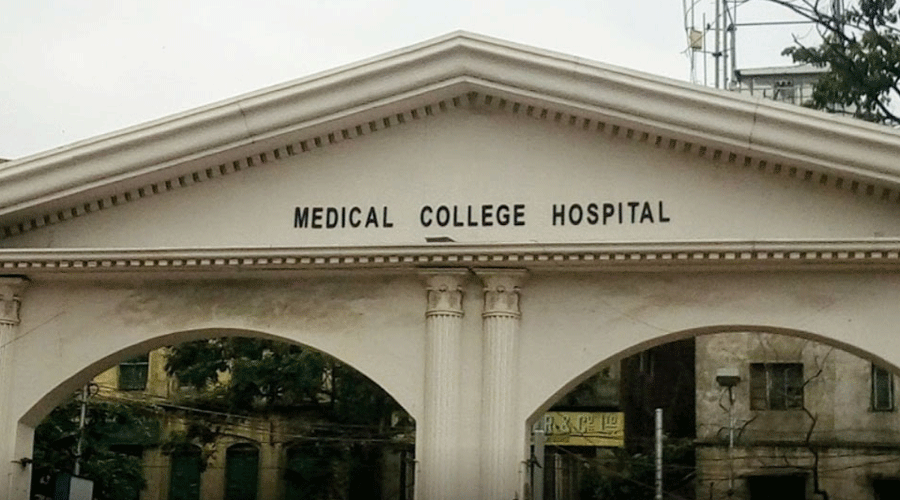Dr Bidhan Chandra Roy was not only a gifted physician, but also a noted educationist and a selfless philanthropist.
The second chief minister of West Bengal from 1948 to 1962, Dr Roy is the maker of modern West Bengal. He was the guiding spirit of the holistic development of West Bengal in the fifties.
He was a pole star as well as a visionary, a man of foresight and a charismatic leader of the people. He possessed the rare ability of converting his visions into versions of reality.
We have much to learn from his foresight and farsightedness of approach, bold initiatives and committed, commanding leadership. His name is deeply linked to the founding of several institutions and cities of West Bengal.
Dr Roy is a cult figure who became both a Fellow of the Royal College of Surgeons and a Member of the Royal College of Physicians. He was awarded the Bharat Ratna in 1961. Yet, he remains largely an uncelebrated and forgotten genius of West Bengal and India.
Dr Roy’s 140th birth anniversary falls on July 1 and the National Doctors’ Day is also celebrated on this day every year in his memory.
The Bengal Health Foundation, an active organisation of doctors in Bengal, is organising a fitting memorial celebration of his life and work on July 1 at Swabhumi in association with Tata Steel, the UK government, Apollo Hospitals and actively accompanied by St Xavier’s University, Kolkata, Bandhan Bank and others.
The celebration has been aptly captioned ‘Bidhan — Brilliance Beyond Brains’.
Dr Roy’s education policy was intensely realistic and oriented towards certainties of development. He adhered close attention to the increase of educational institutions in West Bengal. For example, he increased the budget expenditure from Rs 2.55 crores in 1948-49 to Rs 6.59 crores in 1954-55. He doubled the number of high schools from 761 in 1948 to 1,402 in 1955 and colleges from 54 to 89 at the same period.
He is the father founder of many institutions. He established the Marine Engineering College in 1950. Almost all state universities in the state were initiated by him — Kalyani University in 1954; IIT Kharagpur in 1951; Burdwan University in 1960; University of North Bengal in 1962 and Rabindra Bharati in 1959. Visva-Bharati was elevated to university status in 1951. In management, he began the IISWBM in 1953 — the first management school in India.
He organised the medical education in the state — he was instrumental in establishing many medical colleges and health care centres — like Jadavpur TB Hospital; Chittaranjan Cancer Hospital; Chittaranjan Seva Sadan; Kamala Nehru Hospital and many others. He himself attended to hundreds of children affected by polio and finally established the first polio clinic in Calcutta, now Kolkata.
During World War II when the residents of Kolkata were fleeing fearing Japanese invasion, Dr Roy, being then the vice-chancellor of The University of Calcutta acquired air-raid shelters for school and college students so that classes would continue unperturbed; he ensured relief for students, teachers and employees.
In recognition for his efforts, the doctorate of science was conferred upon him in 1944.
He was highly instrumental in establishing the Indian Medical Association in 1928. He also played a pivotal role in establishing the Indian Institute of Mental Health, the Infectious Disease Hospital and the first-ever postgraduate medical college in Calcutta.
During his stint as the chief minister, he started numerous welfare projects; free government-aided primary schools, state general hospitals in districts and encouraged the grant-in-aid to hospitals and charitable dispensaries.
Dr Roy was the brain behind townships at Durgapur, Kalyani, Bidhannagar, Ashoknagar and Howrah. He also expanded the city of Calcutta towards the Salt Lake area to accommodate the ever-growing population of the city.
Let me share with you a story about Salt Lake city. Dr Roy and Fr Henry Mischowiuski, a Yugoslav priest working in the archdiocese of Calcutta were close friends. In one of their meetings, Dr Roy shared his dream of transforming Salt Lake, swampy marshy lands into a planned township.
Fr Henry, who was an engineer, came up with an idea to dredge and fill the Lake with silt from the Hooghly river — on the one hand, the Lake will be filled and on the other the dredging would increase the river’s navigation.
He also suggested the name of Dobrivoje Toskovic, Yugoslav-based architect who was the master planner of Salt Lake city.
During his days as student at the Calcutta Medical College, Dr Roy came upon an inscription which read, “Whatever thy hands findeth to do, do it with thy might.”
These words were his gospel, his enduring source of inspiration and he executed his belief in this philosophy throughout his life in many contexts.
The more we talk about Dr Roy’s contribution, the more we discover his life’s vision and mission. On his 140th birth anniversary, I pay my humble tribute to this man born to dream our destinies.
Author is the founder vice-chancellor of St Xavier’s University, Calcutta
